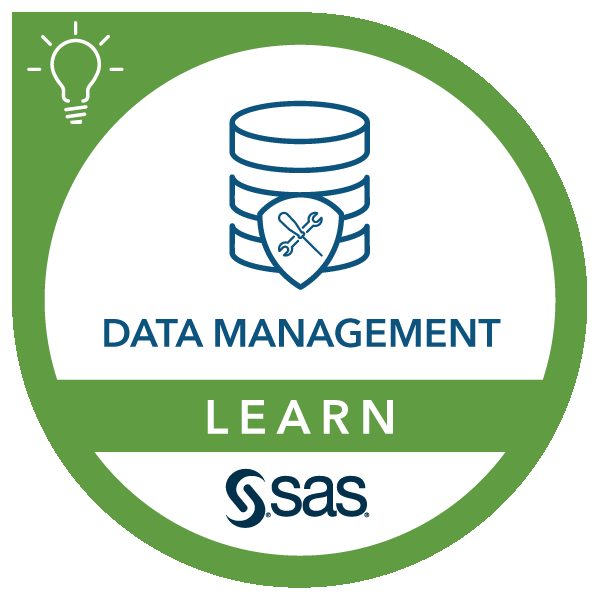SAS® Programming Methods to Read, Process, and Write Database Tables
2h 5m + Hands-On Practice
Available in:
SAS® Programming Methods to Read, Process, and Write Database Tables
ACCST : DCON1A
This course provides training on the generic aspects of how SAS connectivity works, including independent modules covering connectivity to specific data sources and connectivity in specific computing environments. Material will continue to be added to this course over time.
Learn How To
- Use database tables just like SAS data sets to read and write database tables in your SAS code that executes in SAS 9 or on the SAS Viya Compute Server.
- Use database tables like any other caslib data source to load database tables into CAS in-memory tables or to save CAS tables to database tables.
- Write SAS code that optimizes performance when working with database tables by maximizing in-database processing before returning results to SAS for further processing.
- Write SAS programs that contain native database SQL code that is submitted directly to the database for execution in database and return any native query results to SAS for further processing in SAS 9, on the SAS Viya SAS Compute Server, or on the SAS Viya CAS server.
Who Should Attend
The generic material is for anyone using SAS to access any database or other external data sources who needs to learn the general concepts. The more specialized material is for subsets of users who would like to discuss connectivity techniques in the context of the specific data sources and see examples.
Prerequisites
Before attending this course, you should have:
- Completed the SAS Programming 1: Essentials course or have equivalent knowledge.
- Some familiarity with the SQL language.
- Completed the SAS SQL 1: Essentials course or have experience with database SQL programming.
- Completed the Accelerating SAS Code on the SAS Viya Platform course or have equivalent knowledge.
SAS Products Covered
SAS/ACCESS
Course Outline
Overview of SAS Connectivity to Databases
- Architecture and data movement.
- Database access with SAS 9 and the SAS Viya Compute Server.
- Database access with the SAS Viya CAS server.
- SAS/ACCESS LIBNAME overview.
- Combining database tables.
- Library views.
- Creating database tables.
- Implicit database pass-through with the FEDSQL and DS2 procedures.
- Further considerations for the SAS/ACCESS SQL pass-through method.
- SQL pass-through syntax and examples for several databases
- Metadata queries and data queries.
- Using an SQL pass-through query to create a SAS table or a SAS view.
- Submitting database data definition language (DDL) with SQL pass-through.
- FedSQL pass-through.
- Loading database tables into CAS.
- Using the CASUTIL procedure to load and save database tables.
- Using the DATA step, CAS procedures, and PROC FEDSQL to read and write CAS tables into CAS.
- Using CASL to load and save CAS tables.
- Load and save performance tuning.
Live Class Schedule
Duration: 14 hours
Step into our live classes and experience a dynamic learning environment where you can ask questions, share ideas, and connect with your instructor and classmates. With on-demand lab hours, you can explore the material at your own pace. Our globally acclaimed instructors will motivate you to think bigger, so you can take what you've learned and achieve your biggest goals.
This course isn't publicly scheduled, but private training and mentoring may be available. Contact us to explore options.
Private Training
Get training tailored specifically for your team, led by expert SAS instructors. Choose from virtual sessions, or training at your location (or ours). Perfect for teams seeking a customized curriculum and plenty of interaction with a SAS specialist. We'll schedule it at a time that works for you.
Mentoring Services
Take your training to the next level with personalized mentoring. While private training offers structured coursework, mentoring provides hands-on, real-time support from a subject matter expert. As you work with your own data, you'll receive expert guidance to help you uncover insights, unlock the full potential of your data, and make faster progress. Perfect for those looking to apply what they’ve learned and see quicker results.
